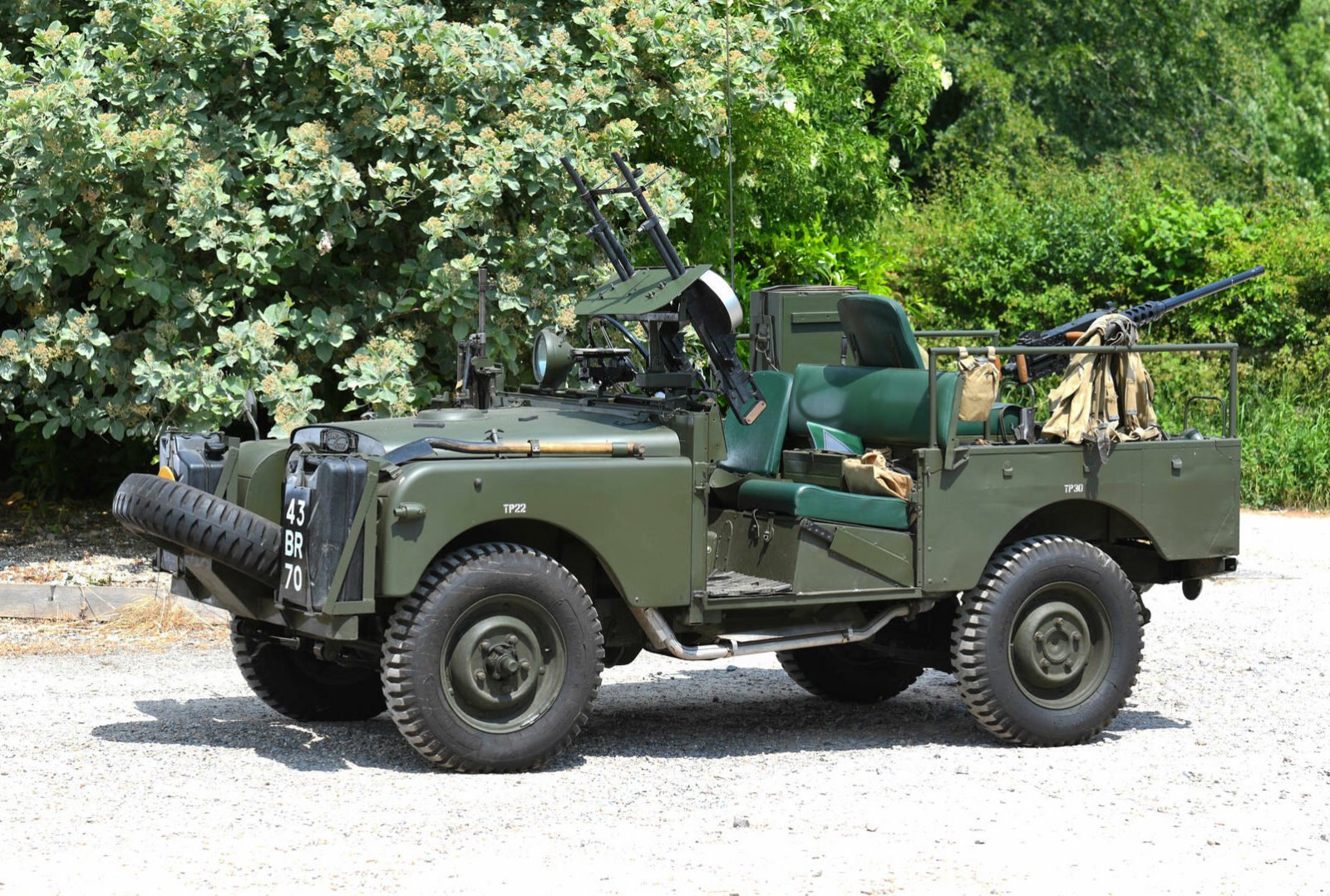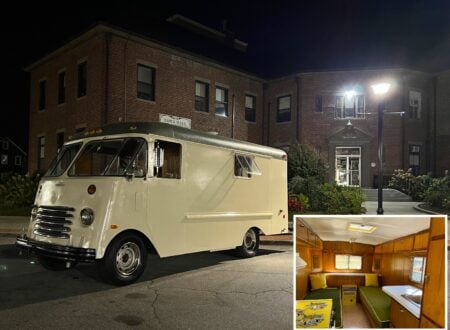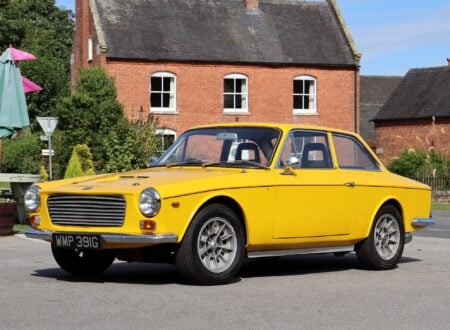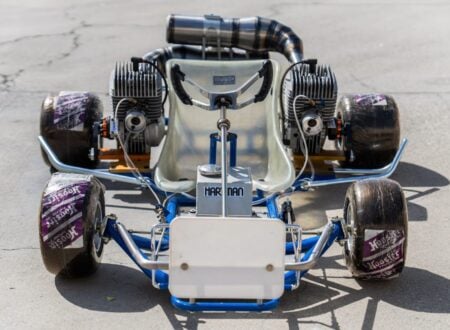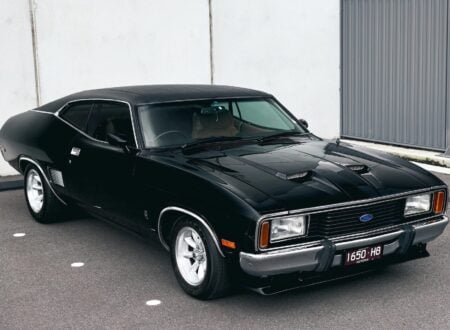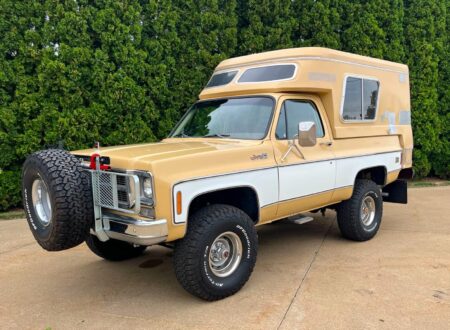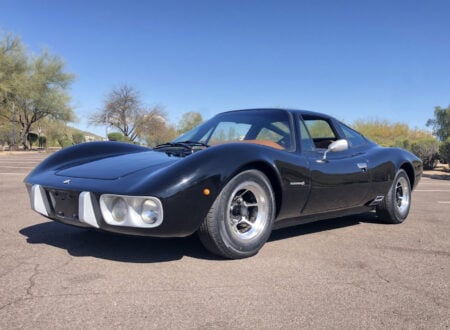The Land Rover began life when at the end of the Second World War British car maker Rover decided to create their own small 4×4 quite like the American Jeep. The Jeep had been born from the US Department of Defense approaching car makers for proposals to manufacture a quarter-ton 4×4 combat vehicle.
It was American Bantam who first stepped up to the plate and the Jeep was created: and it spawned a genre of similar 4×4 vehicles including the Willys/Ford Jeep and the British Land Rover. So when the British Army SAS (Special Air Service) wanted a homegrown 4×4 for their clandestine operations after World War II, it was Land Rover who were asked to supply them with 4×4 vehicles bristling with firepower.
Fast Facts – The Land Rover Series 1 SAS Prototype
- In its formative years the British Special Air Service Regiment experimented with tactics and methods in order to arrive at strategies which would result in maximum effect against an opponent and minimal casualties among SAS soldiers.
- The beginnings of the SAS were during the North Africa Campaign during the Second World War.
- One of the most influential in the formation of the British SAS was Colonel David Stirling and it was he who determined that the use of combat equipped Jeeps was a better way of getting soldiers behind enemy lines to perform sabotage and back out again safely.
- The SAS equipment used on these Jeeps became quite standardized and after the war during the 1950’s the SAS changed over from using Jeeps to using Series 1 Land Rovers that were similarly equipped to the Jeeps of the Second World War.
The Origins Of The Land Rover
The Land Rover was created when British luxury car maker Rover discovered that in the aftermath of the Second World War the market for luxury cars was not what it had been before the war. Fuel was rationed, food was rationed, and the need was not for luxury saloon cars with whisper quiet engines but for a fairly small agricultural 4×4 that would be an asset to the rebuilding of Britain, Europe and many other countries as they rebuilt and replaced what had been destroyed during the war.
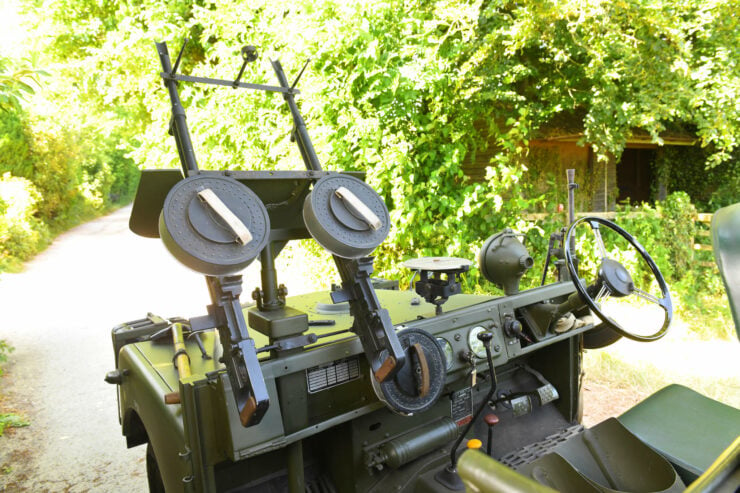

Rover engineer Maurice Wilks had a Jeep on his farm and he well understood its strengths and its shortcomings. He thought that if he couldn’t build a better car that he shouldn’t be in the car making business. So he began the process of creating a 4×4 that would be an all British Rover that would be a world beater.
Wilks reasoned that this new 4×4 needed to have military application but also be useful for agriculture and mining. He understood that the vehicle needed not only to be user-repairable, but to be easily user-repairable wherever they happened to be, and that could mean being many miles from anywhere.
This was to be an around the world expedition vehicle that would be equally at home anywhere in Britain’s vast empire. It also needed to be created on a budget using as many off-the-shelf Rover components as possible.
Wilks lived up to his challenge, and he created a vehicle that was not just equal to the Jeep but in some respects improved over it. It became ubiquitous across Africa, Australia, and the Middle East. It became a key vehicle in the construction of Australia’s Snowy Mountain Hydro Electric Scheme.
For the British Army the Land Rover became a standard vehicle and it was natural for the elite SAS regiment to decide to favour Land Rovers for their special operations. During the Second World War the SAS had used custom equipped Jeeps and so they had by the post-war period arrived at a set of vehicle customizations that were combat tried and proven.
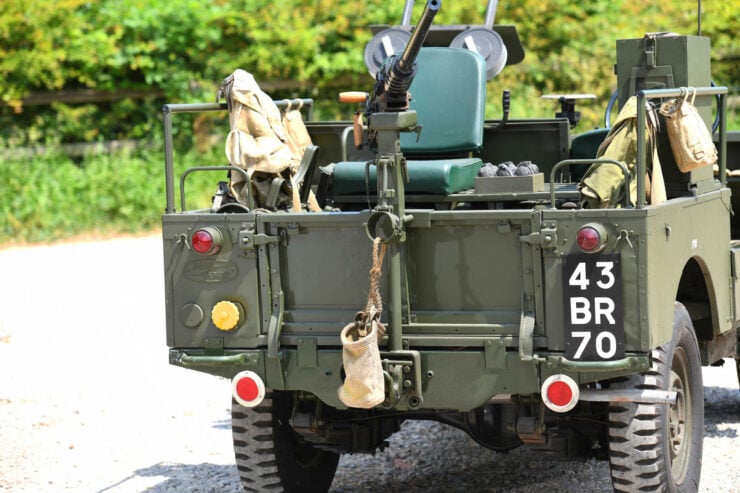

The SAS And Their 4x4s
The original idea for the use of armed Jeeps to act as rapid transport for mobile troops to operate behind enemy lines was first conceived by Lieutenant David Stirling of the British Army in the wake of some operations in the North Africa campaign that had used SAS soldiers to parachute into an area behind enemy lines to go and destroy as many enemy aircraft as possible: the sort of operation that came to be referred to as an “airport job”.
Once their mission was completed the original plan had been for the SAS soldiers to proceed on foot to a pre-arranged meeting point to be picked up by Long Range Desert Group vehicles and carried to safety. The problem with this being that such operations produced unacceptably high casualties. SAS soldiers required a substantial amount of training to prepare them for the difficulties they faced and the loss of a highly trained soldier was a costly loss.
So with these experiences before him Lieutenant David Stirling reasoned that instead of parachuting to the airfields it would be better to use Jeeps like those used by the Long Range Desert Group and drive in and then drive out.
This methodology proved successful and as the SAS undertook a number of such missions they were able to figure out the most preferred assortment of equipment with which to fit their Jeep, how to lay it out, what the crew roles were to be, and the tactics to be used. As the war progressed the SAS were tasked with these behind the lines operations in North Africa, Italy, and Europe, including Germany in the closing stages.
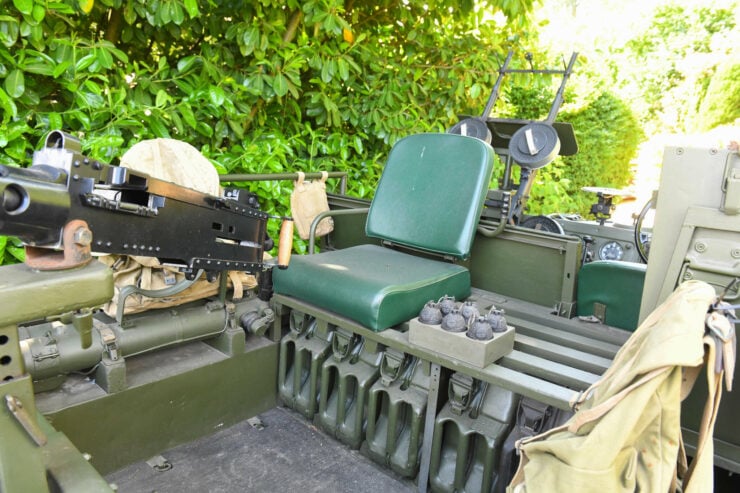

General Bernard Montgomery acknowledged the contribution David Stirling had made in November 1942 when he said of him: “The boy Stirling is quite mad, quite, quite mad. However, in a war there is often a place for mad people.”
So it somehow seems fitting that David Stirling was the one who coined the motto of the SAS, “Who Dares Wins”.
The end of the Second World War unfortunately did not see the end of all wars however. So the work of the SAS was far from over, it had only just begun.
It was in the mid-1950’s that the equipment set-up for the SAS vehicles was finalized. They had moved on from Jeeps and had tried the British Austin Champ but settled on the diminutive and lightweight Land Rover Series I short wheelbase.
The prototype SAS Land Rover was created on chassis #170601215 which was a Series I with an 86″ chassis. It would be the only example made on an 86″ chassis as all others would be on 88″ chassis.
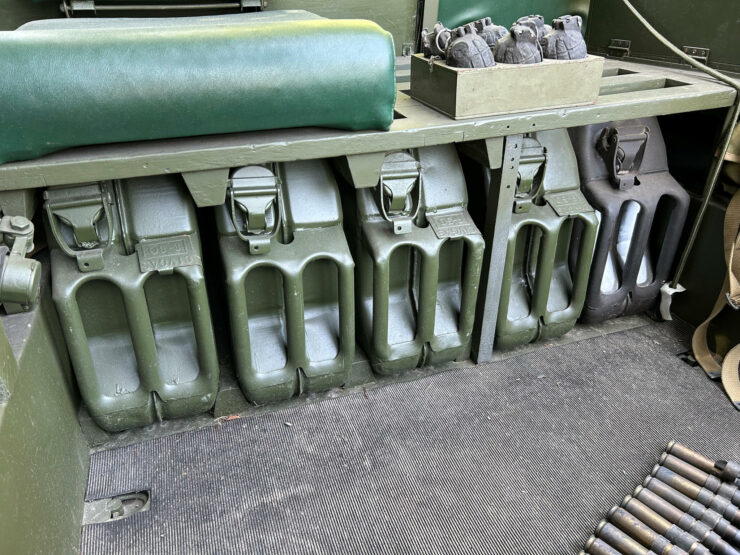

The SAS Prototype Land Rover Shown Here
This SAS prototype was given the Army registration 43 BR 70, and fitted with a remarkable array of equipment which includes:
- Two drum magazine Vickers .303 British heavy machine guns mounted side by side on the front bulkhead.
- A Bren light machine gun in .303 British in a scabbard located on the right side in easy reach of the driver.
- A Browning .50 BMG (Browning Machine Gun) heavy machine gun mounted to the rear tailgate and chassis.
- A Bazooka carried in the rear compartment.
- Five 20 litre fuel “Jerry cans” in storage compartment under the rear seat
- Two 20 litre water “Jerry cans” carried on front mounted carriers
- Front mounted Sun compass
- Twin Vickers drum magazine holders located between the front seats
- Radio
- Hand grenade box
- Spare tyre in front mounted bracket
- Front mounted spotlight
The vehicle was only equipped with a single 10 gallon fuel tank under the driver’s seat, and had a tool/gear storage box under the passenger seat.
There would be a total of ten similarly equipped standardized SAS Series 1 Land Rovers made and these would be the predecessors of the Series 2 and 2A “Pink Panther” SAS Land Rovers. This vehicle is believed to have seen active service in Oman during the turbulence there but because SAS operations are necessarily clandestine historic information about such use remains publicly unavailable.
This very first prototype 1955 SAS Land Rover Series 1 is to be offered for sale by Bonhams at their Goodwood Revival Collectors’ Motor Cars and Automobilia auction to be held on 9th September 2023 you can find the sale page if you click here.
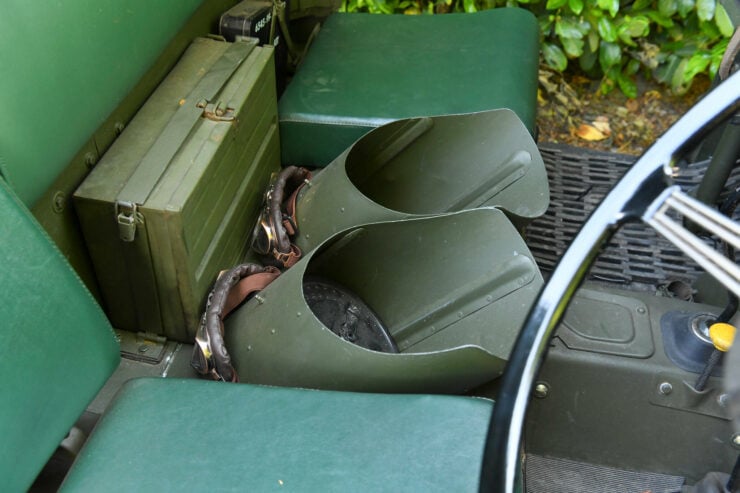

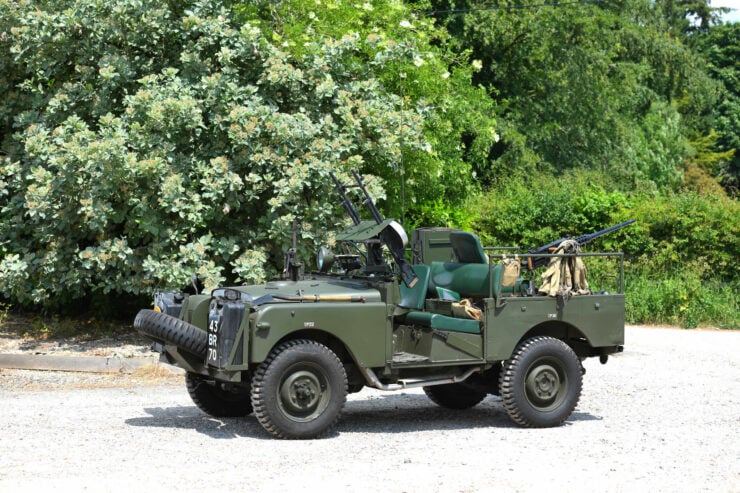
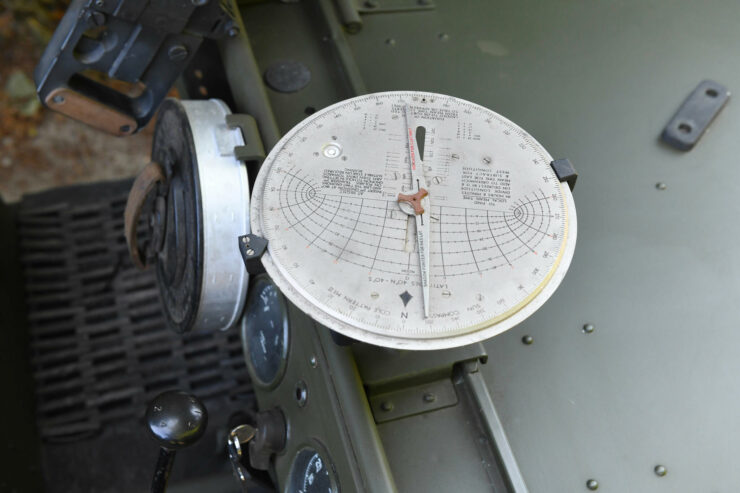
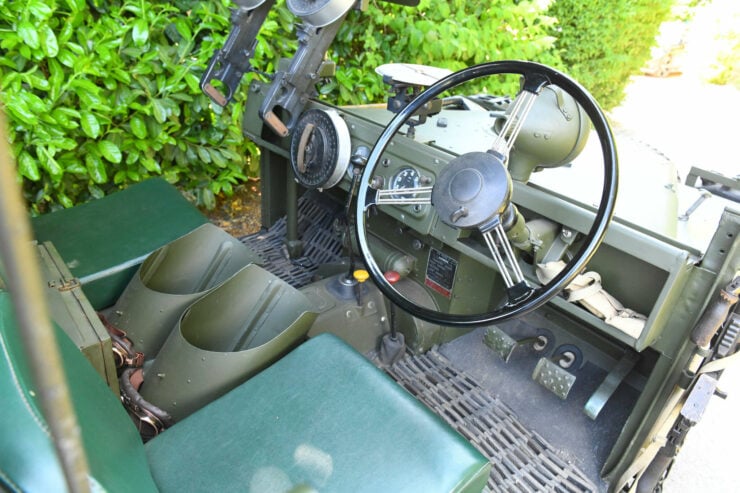
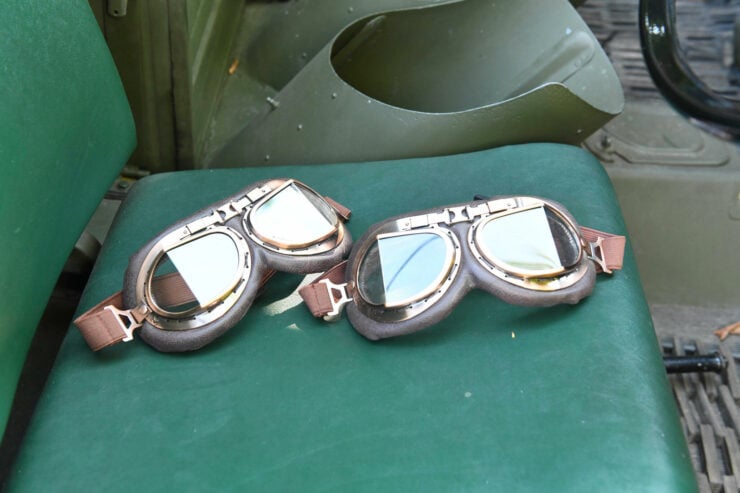
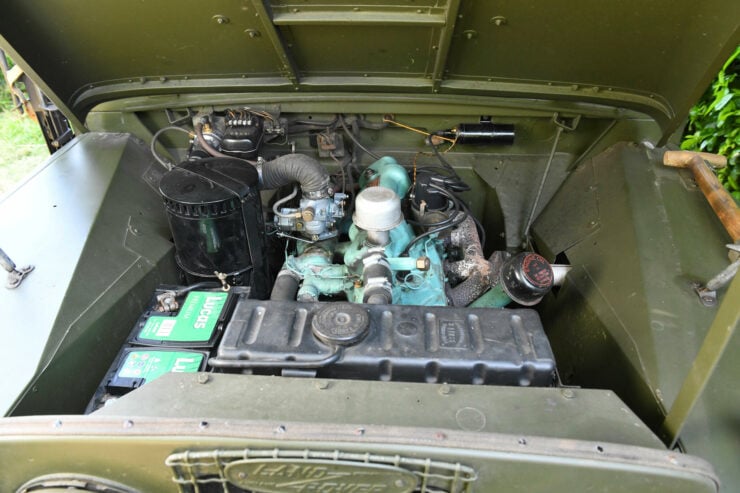
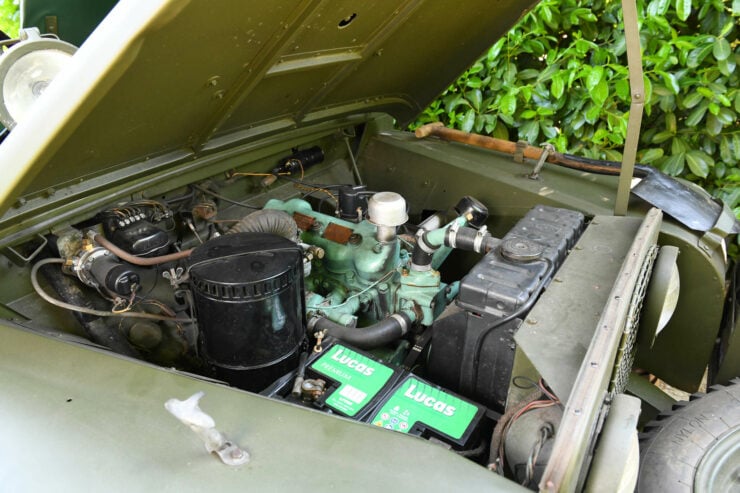
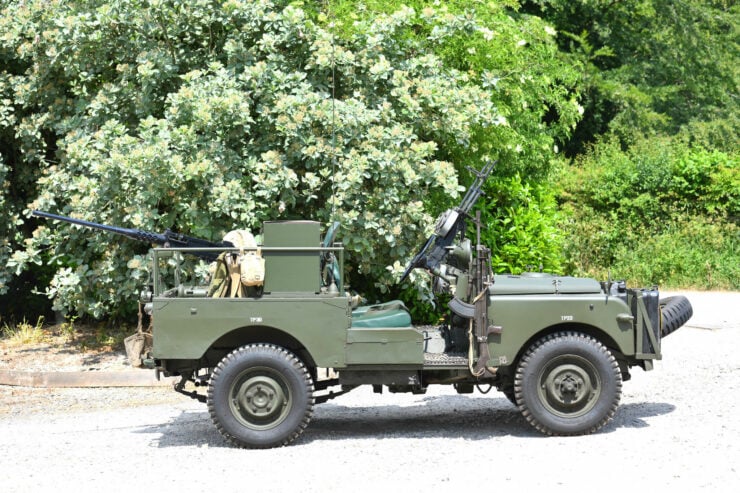
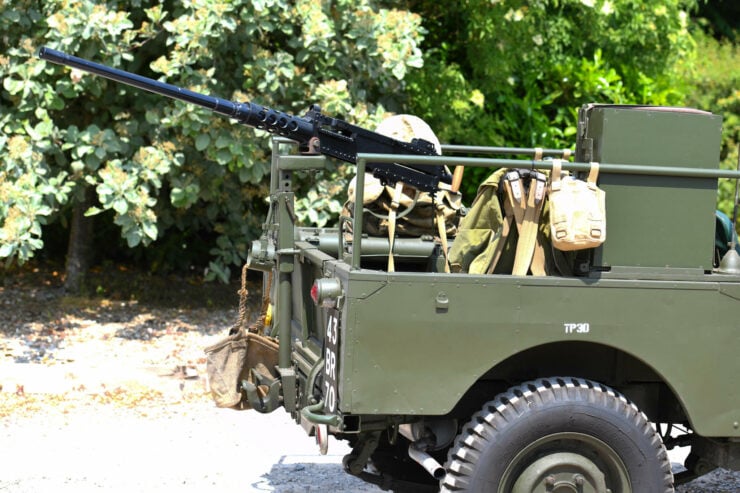
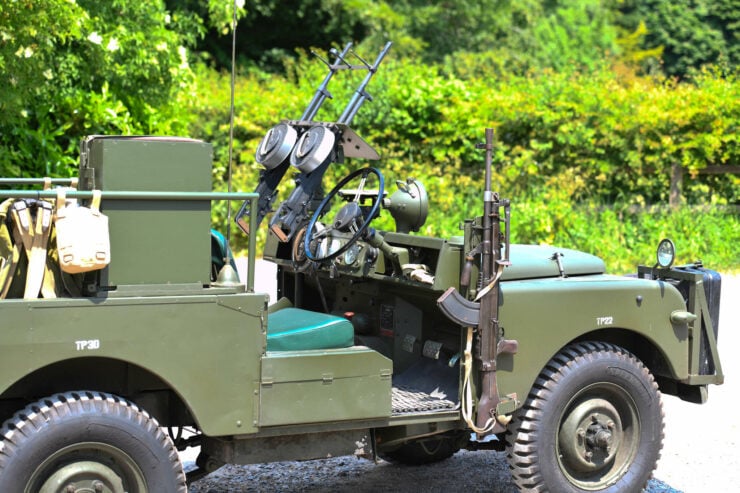
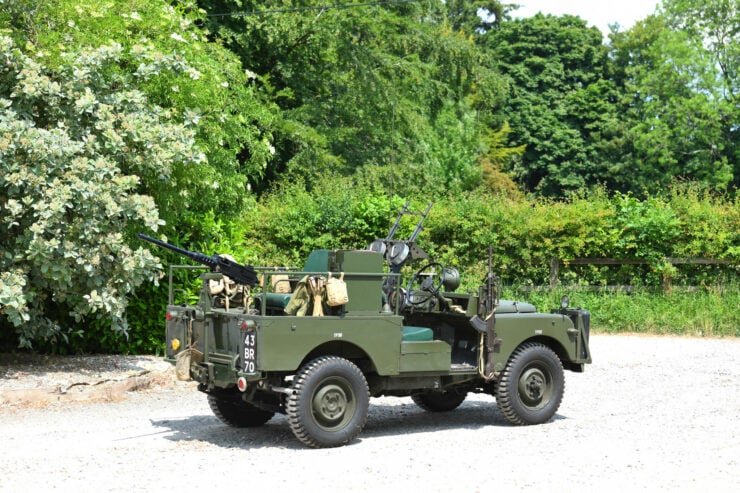
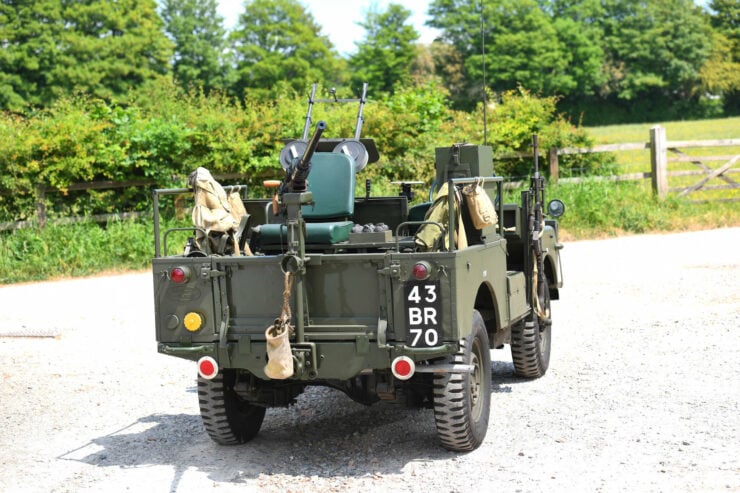
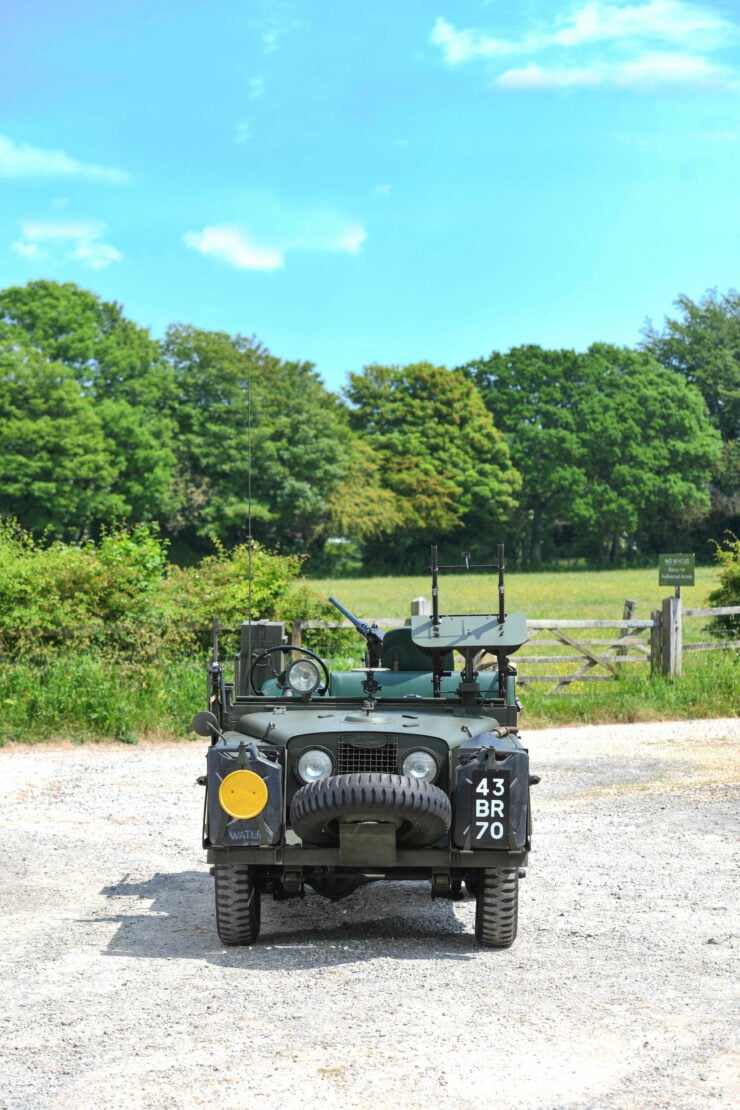
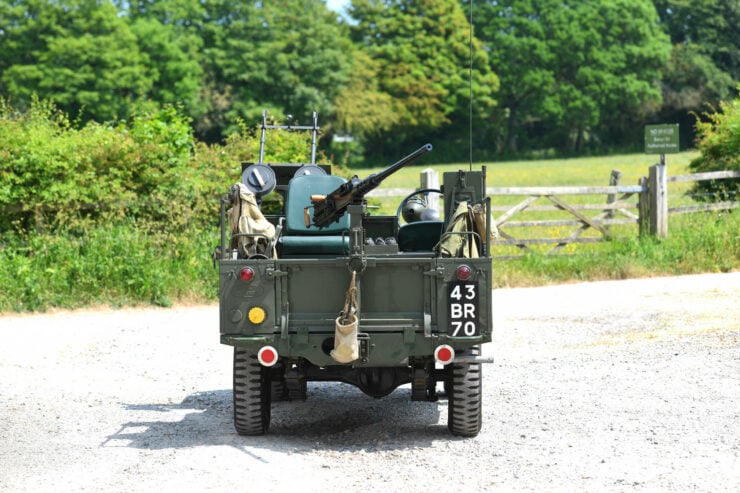
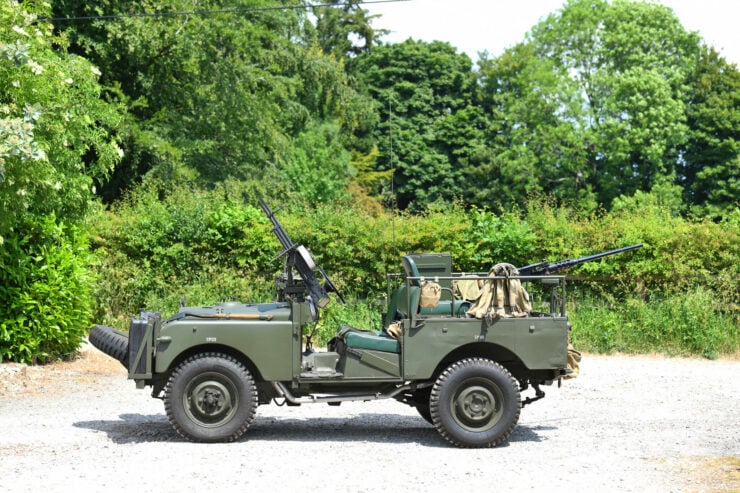
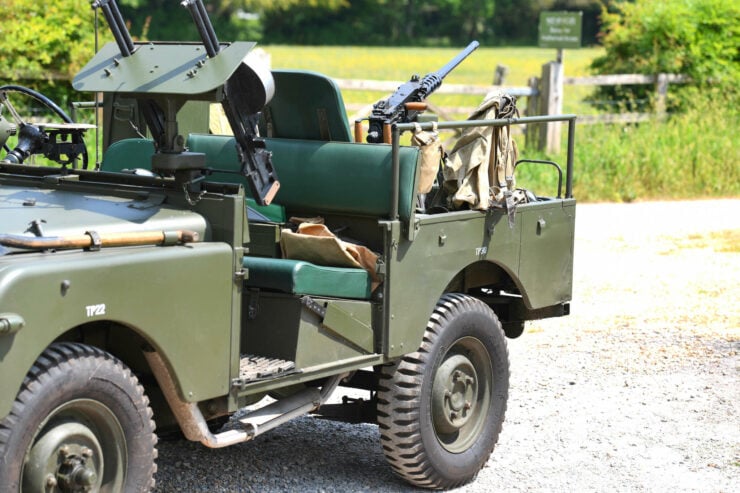
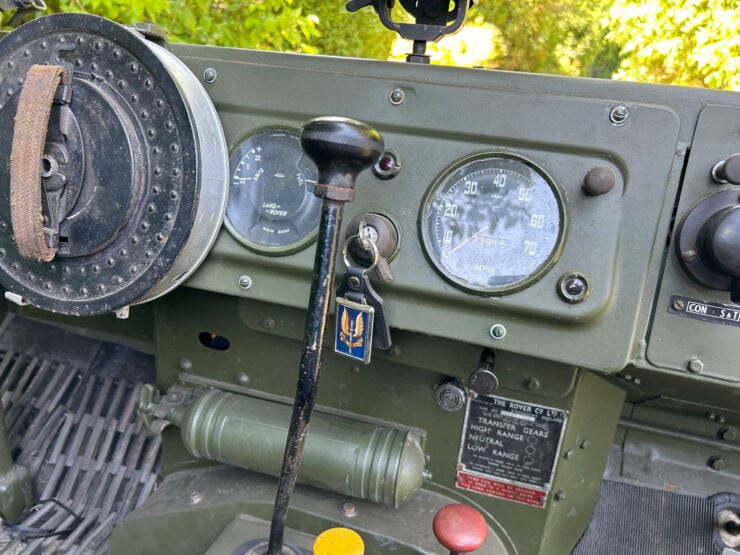
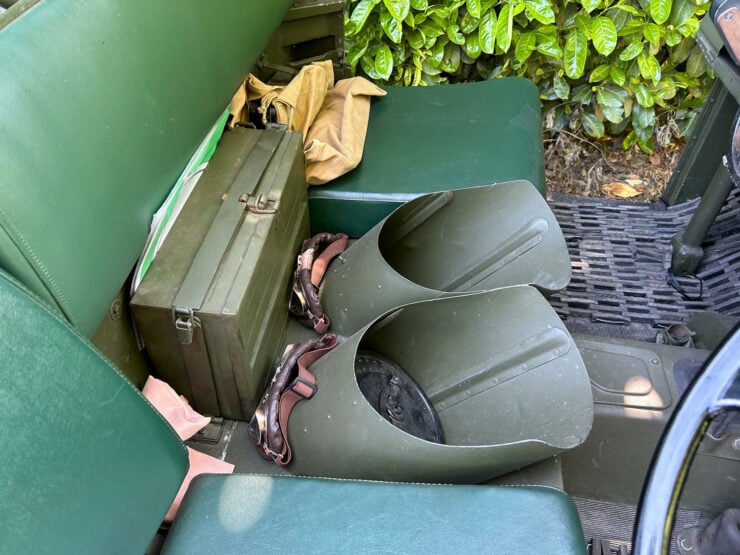
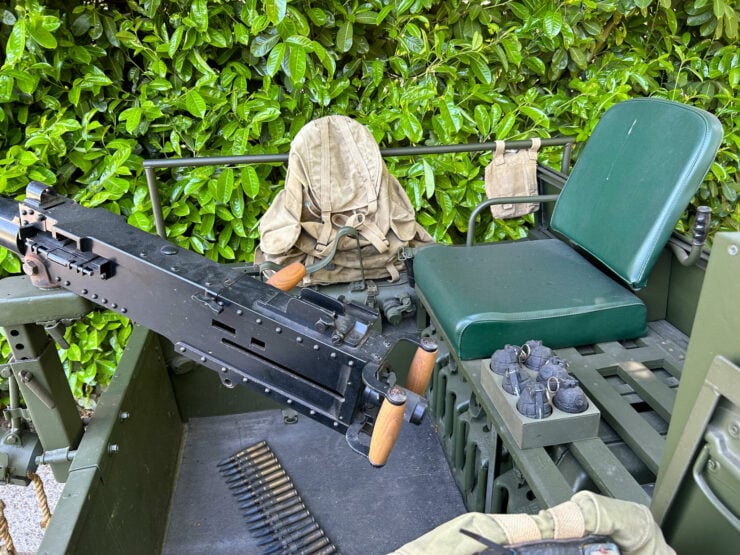
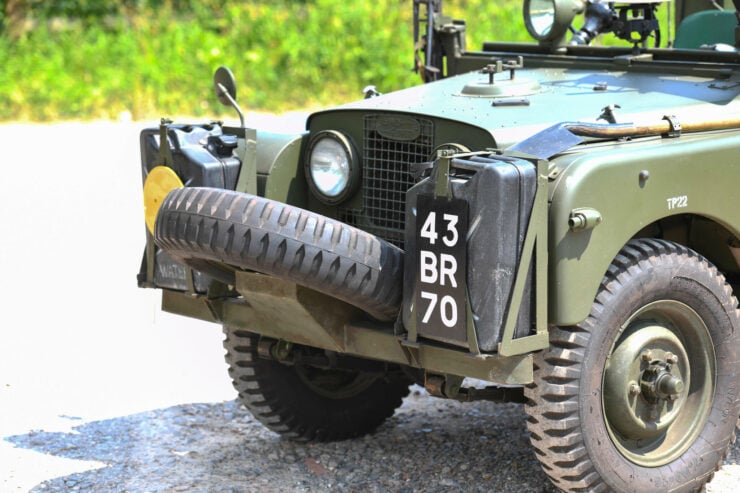
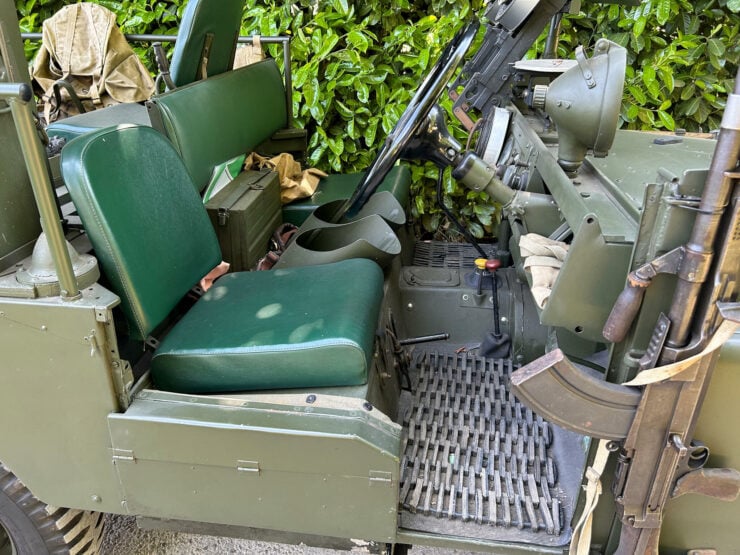
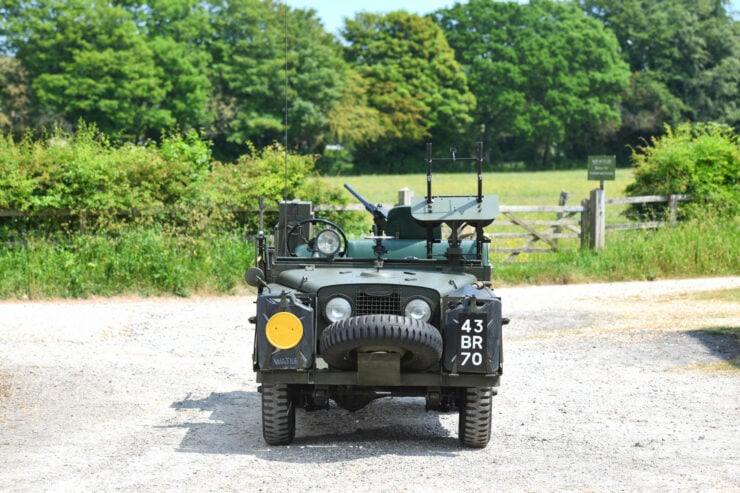
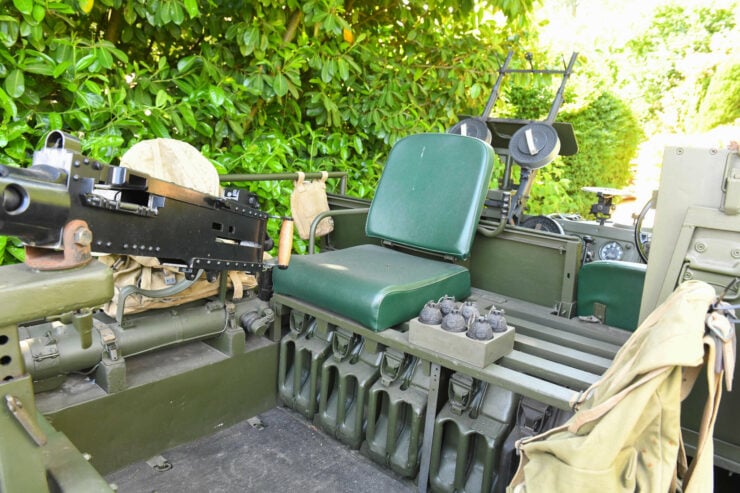
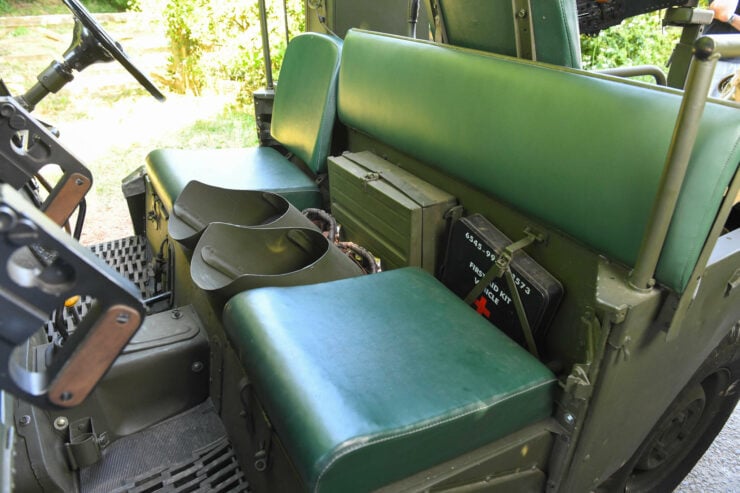
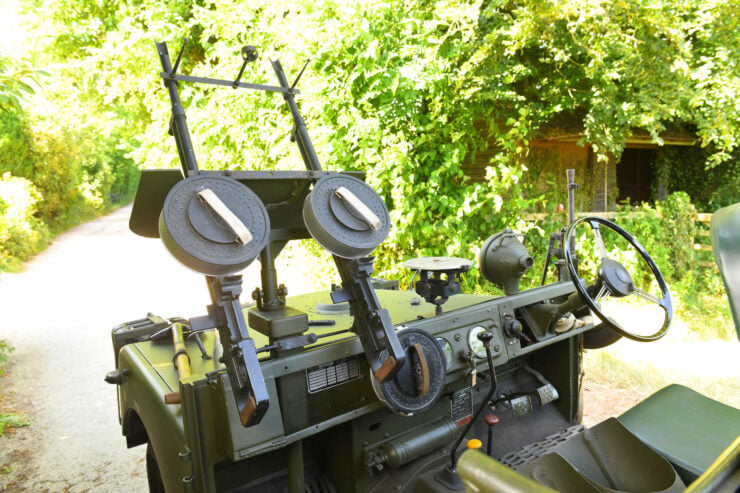
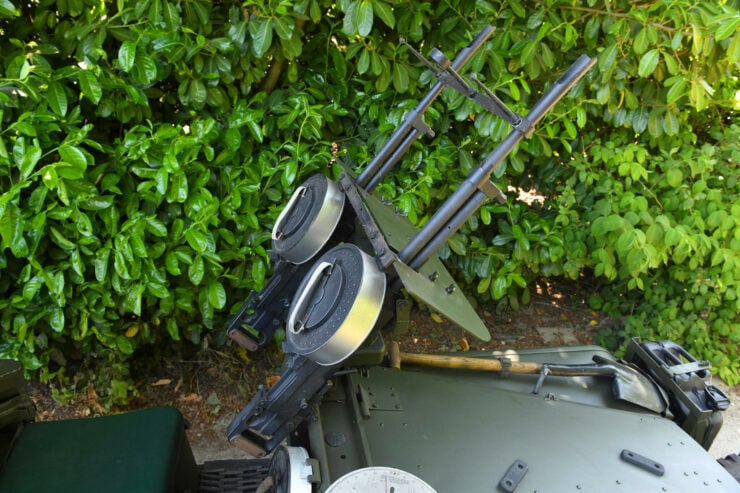
Picture Credits: All pictures courtesy Bonhams.

